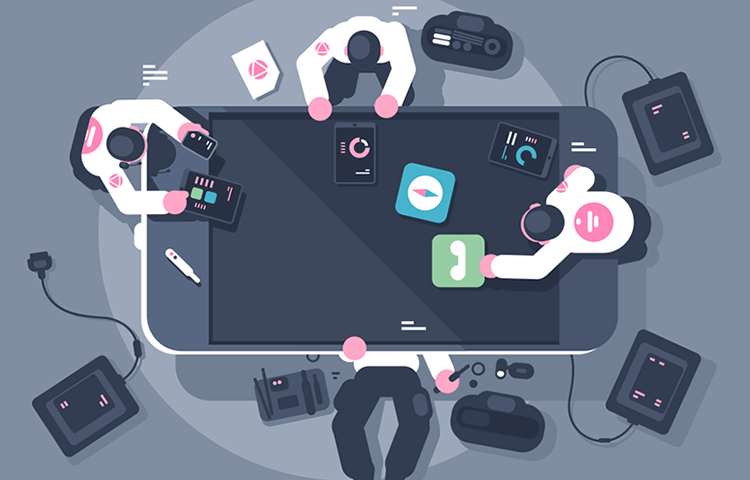Mobile App Development
Mobile application development is the process to making software for smartphones and digital assistants, most commonly for Android and iOS. The software can be preinstalled on the device, downloaded from a mobile app store or accessed through a mobile web browser. The programming and markup languages used for this kind of software development include Java, Swift, C# and HTML5.
Mobile app development is rapidly growing. From retail, telecommunications and e-commerce to insurance, healthcare and government, organizations across industries must meet user expectations for real-time, convenient ways to conduct transactions and access information. Today, mobile devices—and the mobile applications that unlock their value—are the most popular way for people and businesses to connect to the internet. To stay relevant, responsive and successful, organizations need to develop the mobile applications that their customers, partners and employees demand.

Choose a platform
Many independent application development teams choose to build their apps for Android first. Why? The vast majority—around 70 percent—of smartphones run Android, and the Google Play Store has fewer restrictions than the Apple App Store. On the other hand, mobile applications developed for iOS have far fewer devices that need support, making optimization simpler. And user retention is typically higher for iOS applications.
Develop for both Android and iOS: Native apps or hybrid apps?
You could develop two native applications. Taking advantage of native APIs and OS-specific programming languages can help you build a powerful app. Most enterprise apps, especially ones that require substantial API traffic, benefit from native development.
Think light: Building for a mobile platform
Whether you choose native or hybrid mobile application development, one of the first hurdles you’ll need to overcome is the relatively limited resources on mobile devices. Your target mobile device will have much less processing power and memory than desktop computers or enterprise servers. These constraints might seem like a significant challenge, especially if you’re more familiar with the comparatively boundless resources for conventional software development for web apps.
Limited mobile platform resources mean you need to adjust your goals for your app design.
Delivering a great user experience is vital. That starts with understanding that your user interface for a mobile app should be simpler than a desktop application interface. By creating a straightforward UX design that is focused on critical functions, you can provide a better user experience while consuming fewer resources.
Your mobile app interface should be designed for touch. Mobile users must be able to navigate your app easily and provide input without excessive typing.
